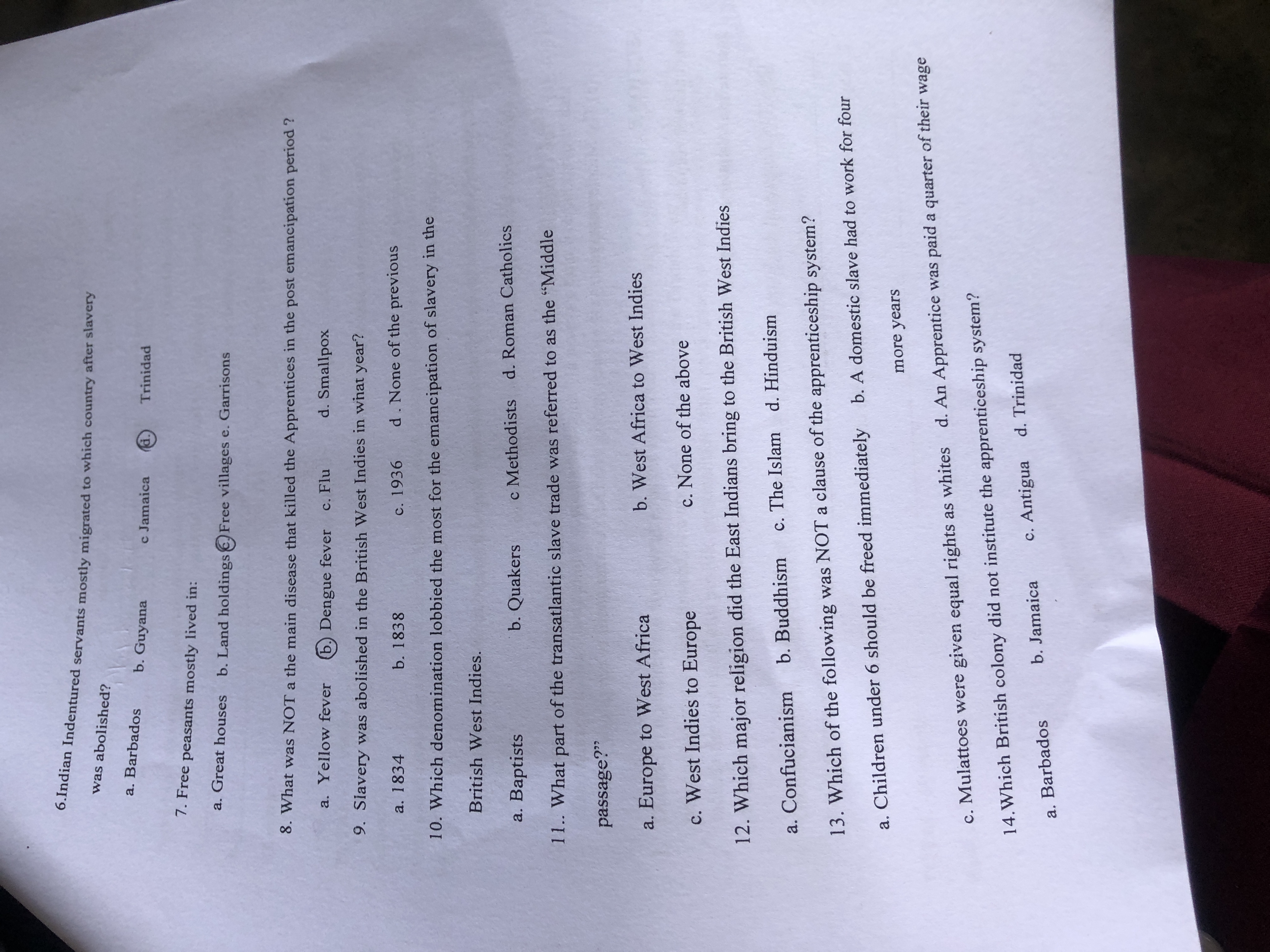Indian indentured servants mostly migrated to which country after slavery was abolished? What was NOT a main disease that killed the Apprentices in the post-emancipation period? Sl... Indian indentured servants mostly migrated to which country after slavery was abolished? What was NOT a main disease that killed the Apprentices in the post-emancipation period? Slavery was abolished in the British West Indies in what year? Which denomination lobbied the most for the emancipation of slavery in the British West Indies? What part of the transatlantic slave trade was referred to as the 'Middle passage'? Which major religion did the East Indians bring to the British West Indies? Which of the following was NOT a clause of the apprenticeship system? Which British colony did not institute the apprenticeship system?

Understand the Problem
The question is asking about historical events and conditions related to Indian indentured servants, diseases affecting apprentices, the abolition of slavery in the British West Indies, and the religions brought by East Indians. This indicates a focus on colonial history and social systems.
Answer
1. Guyana 2. Flu 3. 1834 4. Quakers 5. West Africa to West Indies 6. Hinduism 7. Mulattoes equal rights 8. Antigua
The answers are as follows:
- Indian Indentured servants mostly migrated to Guyana.
- Flu was NOT a main disease that killed Apprentices in the post-emancipation period.
- Slavery was abolished in the British West Indies in 1834.
- The Quakers lobbied the most for the emancipation of slavery in the British West Indies.
- The part of the transatlantic slave trade referred to as the 'Middle passage' was West Africa to West Indies.
- Hinduism was the major religion the East Indians brought to the British West Indies.
- 'Mulattoes were given equal rights as whites' was NOT a clause of the apprenticeship system.
- Antigua did not institute the apprenticeship system.
Answer for screen readers
The answers are as follows:
- Indian Indentured servants mostly migrated to Guyana.
- Flu was NOT a main disease that killed Apprentices in the post-emancipation period.
- Slavery was abolished in the British West Indies in 1834.
- The Quakers lobbied the most for the emancipation of slavery in the British West Indies.
- The part of the transatlantic slave trade referred to as the 'Middle passage' was West Africa to West Indies.
- Hinduism was the major religion the East Indians brought to the British West Indies.
- 'Mulattoes were given equal rights as whites' was NOT a clause of the apprenticeship system.
- Antigua did not institute the apprenticeship system.
More Information
Indian indentured servants primarily went to British Guiana (now Guyana). Quakers were significant in abolition efforts. Slavery in the British West Indies ended in 1834, and Hinduism was the main religion brought by East Indians.
Tips
A common mistake is confusing the start of the abolition movement (1807) with the complete end of slavery (1834).
Sources
- Indentured labour from South Asia (1834-1917) | Striking Women - striking-women.org
- The West Indian colonies and emancipation - UK Parliament - parliament.uk
- Indentured Workers and Anti-Colonial Resistance in the British Empire - review.gale.com
AI-generated content may contain errors. Please verify critical information